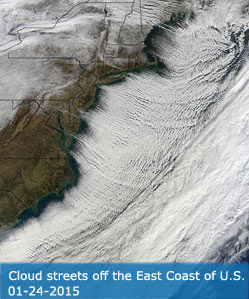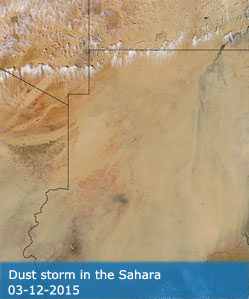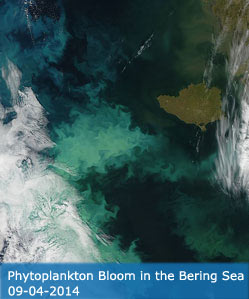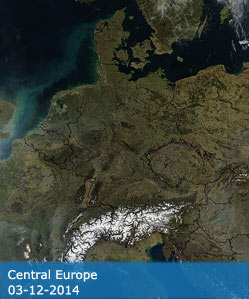MODIS Remote Sensing Reflectance
Overview
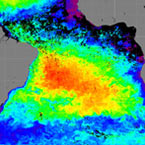
The fundamental quantity to be derived from ocean color sensors is the spectral distribution of reflected visible solar radiation upwelling from below the ocean surface and passing though the sea-air interface (Gordon and Wang, 1994). Spaceborne ocean color sensors, however, measure the spectral radiance exiting the top of the atmosphere (TOA). The majority of that observed TOA radiance is light reflected by air molecules and aerosols within the atmosphere, and those contributions must be accurately modeled and removed from the observed signal. Similarly, surface contributions from whitecaps and sun glint, the specular reflection of the sun into the sensor field of view, must be estimated and removed. Finally, the attenuating effects of absorbing atmospheric gases and scattering losses due to transmittance of the water-leaving radiance through the atmosphere must be accounted for. The process of retrieving water-leaving radiance from TOA radiance is typically referred to as atmospheric correction.
Product Information
• Validated Stage: Stage 2
• Algorithm Point of Contact: Bryan Franz
• DOI:
Terra
NASA Goddard Space Flight Center, Ocean Ecology Laboratory, Ocean Biology Processing Group; (2014): MODIS-Terra Ocean Color Data; NASA Goddard Space Flight Center, Ocean Ecology Laboratory, Ocean Biology Processing Group. http://dx.doi.org/10.5067/TERRA/MODIS_OC.2014.0
Accessed on 07/28/2015.
Aqua
NASA Goddard Space Flight Center, Ocean Ecology Laboratory, Ocean Biology Processing Group; (2014): MODIS-Aqua Ocean Color Data; NASA Goddard Space Flight Center, Ocean Ecology Laboratory, Ocean Biology Processing Group. http://dx.doi.org/10.5067/AQUA/MODIS_OC.2014.0
Accessed on 07/28/2015.
Product Details
All of the MODIS Remote Sensing Reflectance Level 3 data can be found at http://oceancolor.gsfc.nasa.gov/l3.

